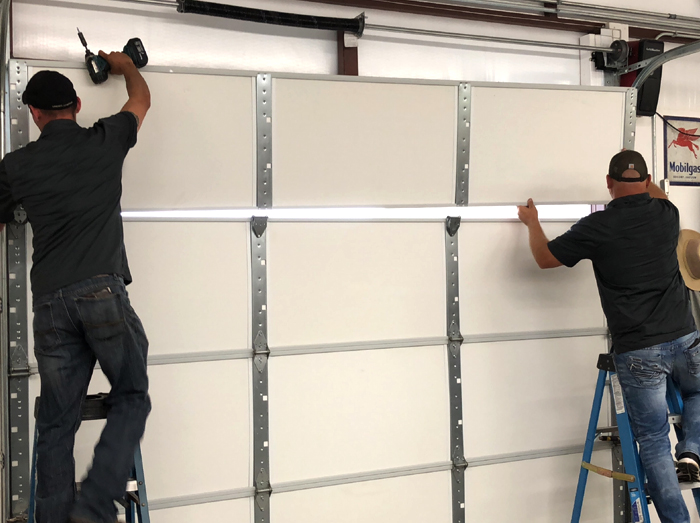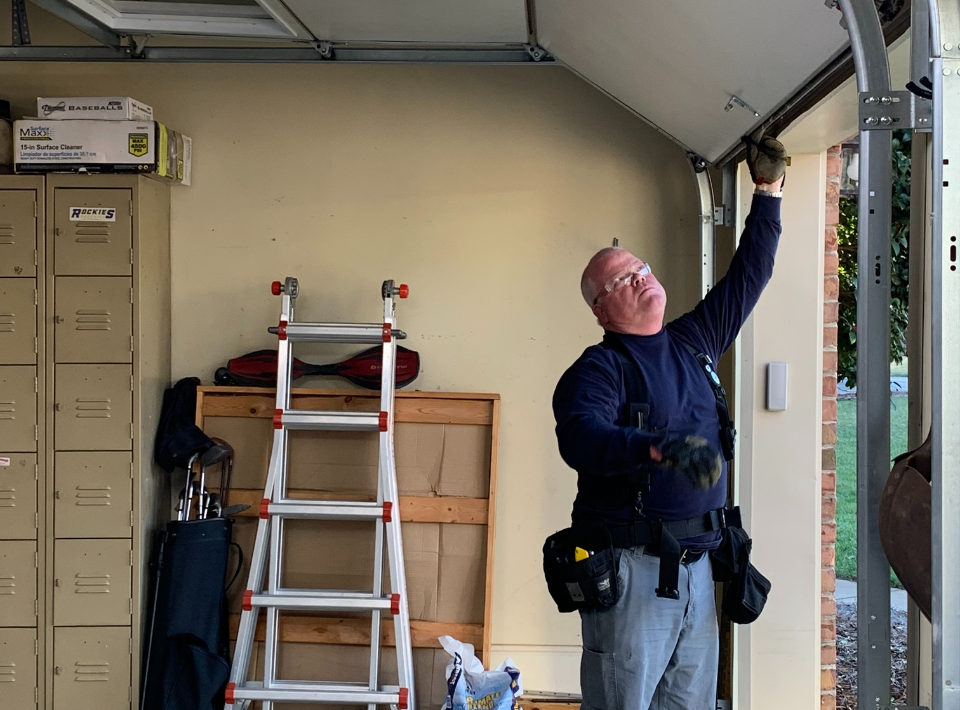Common Garage Door Issues and Just How to Repair Them
Garage doors are vital for both protection and convenience, yet they commonly offer a range of typical concerns that can discourage homeowners. While some issues may appear uncomplicated to fix, others might need a more nuanced understanding of garage door technicians.
Noisy Garage Door Operation
A loud garage door operation can be a significant resource of inconvenience for home owners, frequently showing underlying mechanical concerns. Such interruptions might originate from numerous reasons, consisting of damaged rollers, loosened hardware, or insufficient lubrication. Identifying the resource of the sound is important for reliable resolution.
Over time, these elements can weaken, leading to grinding or squeaking audios as the door steps. Furthermore, loose screws or screws in the door system can produce rattling noises during procedure.
Another contributing variable is inadequate lubrication of the door's relocating components. Applying a high-grade lubricating substance to the tracks, springtimes, and rollers can substantially lessen friction and sound. House owners need to do this upkeep regularly to maintain ideal performance.
Lastly, the garage door opener might additionally create sound due to its age or mechanical problems. If the sound lingers despite attending to various other variables, getting in touch with a specialist for a thorough evaluation and prospective repair may be needed.
Door Will Not Open Up or Close
Experiencing a garage door that will not open or close can be incredibly irritating and typically signals a breakdown within the system. A number of variables can add to this issue, and recognizing the root cause is essential for efficient resolution.

Next, evaluate the safety sensing units located at the base of the door. These sensing units can come to be misaligned or obstructed by particles, avoiding the door from running correctly. Clean the sensing units with a soft cloth and guarantee they are straightened.
Furthermore, the garage door's inner components must be assessed. Concerns such as a damaged springtime, worn-out rollers, or a harmed opener can hinder movement. If any type of parts seem harmed, it may be a good idea to speak with a professional for repairs.
Misaligned Tracks
(Prompt Attention)Misaligned tracks can significantly interfere with the smooth operation of a garage door, resulting in operational failures such as unequal motion or full immobilization. This issue generally occurs because of a range of elements, consisting of deterioration, unintentional effects, or incorrect setup. When the tracks are misaligned, the rollers can not relocate easily, which not only strains the electric motor yet additionally poses safety and security risks.
If you see any kind of inconsistencies, it is essential to deal with the issue promptly. Meticulously touch the track back right into its correct placement using a rubber club or a comparable device, guaranteeing it is straight and level.
As soon as the positioning is remedied, retighten the screws to safeguard the track. For a much more long-term option, think about reinforcing the tracks with additional braces. Routine maintenance, including cleaning the tracks and making sure rollers are in great problem, can stop future misalignments. By dealing with misaligned tracks quickly, you can bring back the capability of your garage door and boost its durability.
Broken Springs
Amongst the different components of a garage door system, damaged springtimes are one of the most typical problems that can significantly hinder its performance. Garage door springtimes are vital for stabilizing the weight of the door, permitting smooth opening and closing. When a spring breaks, it can result in a door that is challenging to run or, in some instances, completely inoperable.
There are 2 main kinds of springs: torsion springtimes, which are placed over the door, and extension springtimes, found on either side. Signs of a broken springtime consist of a door that won't open up, a visible gap in the springtime, or a loud sound throughout procedure. Trying to operate a garage door with a broken spring can trigger additional damages to the door or the opener.
Repairing busted springtimes is not a DIY project; it requires specialized devices and know-how due to the high tension involved. It is recommended to get in touch with a specialist service technician that can safely replace the springtimes and make certain the door is find out this here correctly stabilized. Regular maintenance and assessments can aid avoid spring failings and extend the lifespan of the garage door system.
Remote Issues

The very first action is to inspect the batteries in the remote. Replace them if they are weak or dead. If the remote still stops working to run, inspect the garage door opener to make certain that its sensing units are tidy and unobstructed. Dust, debris, or misalignment might impede the signal transmission in between the remote and the opener.
Disturbance from various other digital gadgets can additionally hamper remote functionality. Make certain that neighboring devices, such as cordless routers or cordless phones, are not causing disruptions. garage door service. If interference is suspected, attempt moving these tools additionally away from the garage door opener
In some instances, the remote may need to be reprogrammed. Consult the maker's standards to reset the push-button control and synchronize it with the garage door opener. If all else falls short and the remote remains to malfunction, consider getting in touch with an expert specialist for a thorough assessment and possible replacement of the remote or opener.
Conclusion
(Local Specialists)In recap, usual garage door issues can significantly impact capability and safety. Resolving loud operation involves lubrication and tightening equipment, while concerns with opening or closing require examination of source of power and sensors. Misaligned tracks can be fixed through modification, although busted springtimes necessitate professional intervention. Remote control malfunctions usually arise from weak batteries or disturbance, which can be solved via replacement or reprogramming. Aggressive upkeep and timely repairs can ensure optimum efficiency and longevity of garage doors.